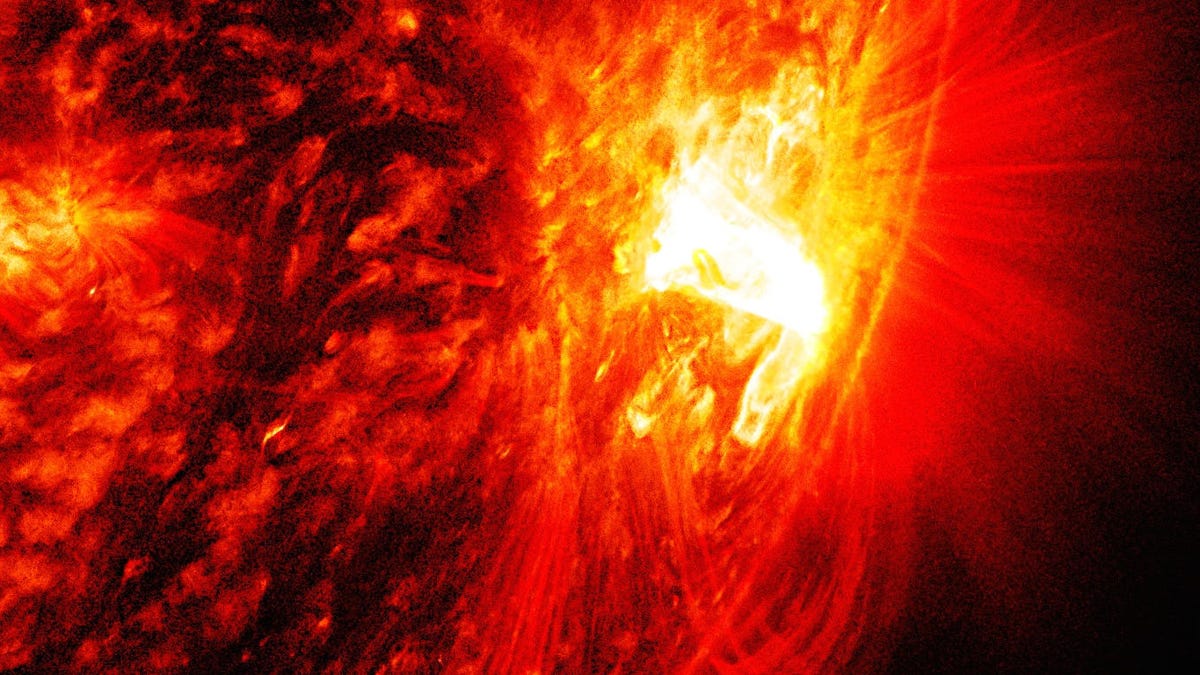Scientists discover 'plasma tsunamis' are responsible for sunspots
You can't spell tsunami without "sun."

Hot off the press.
Within the extreme heat of the sun, rolling waves of plasma known as "solar tsunamis" could be causing the sudden death of solar cycles. A team of scientists from NASA , the University of Maryland and the National Center for Atmospheric Research (NCAR) have identified ominously-named "terminator events" which mark the end of a sunspot cycle -- and could explain how the sun rapidly transitions from a period of low activity to high.
The study, published in the journal Solar Physics on July 9, uses almost 140 years of data collected from the ground and by NASA's Solar Terrestrial Relations Observatory (Stereo) and Solar Dynamics Observatory (SDO), two spacecraft that have been staring at the sun from orbit for years. Studying incredibly bright points of UV light emanating from the sun's surface, the researchers noticed how the bright point appeared at high latitudes and moved toward the sun's equator over decades.
Eventually, the bright points disappear: The so-called "terminator event." Shortly after, a huge burst of activity occurs, marking the start of the next sunspot cycle.
"The evidence for terminators has been hidden in the observational record for more than a century, but until now, we didn't know what we were looking for," said Scott McIntosh, an NCAR scientist who worked on both studies, in a press release.
The new research ties together with a previous paper, published in the journal Scientific Reports in February, showing how sunspots may be triggered by the solar tsunamis.
Though it looks like a mostly unchanging giant ball of gas floating millions of miles away from us, the sun has cycles. Scientists understand that each solar cycle lasts about 11 years. During a solar minimum, the activity is at its lowest, but shortly after a minimum, activity spikes which can result in huge numbers of sunspots, flares and solar storms which, in turn, affects space weather and can even do damage to satellites and GPS stationed around the Earth.
Establishing how sunspots evolve is a critical aspect for scientists to predict how the sun might swing from low activity to high. The terminator events seem to tie together with a whole range of other measures of solar activity, too.
"We were able to identify these terminators by looking at data from a whole range of different measures of solar activity – magnetic fields, spectral irradiance, radio flux – in addition to the bright points," said Bob Leamon, a co-author on the paper from the University of Maryland.
With NASA's Parker Solar Probe currently snapping images from inside the sun's atmosphere, STEREO, SDO and other solar observers currently setting their eyes on the sun, we should begin to unlock a few more mysteries of these rapid changes in solar activity.
"In the next year, we should have a unique opportunity to extensively observe a terminator event as it unfolds and then to watch the launch of Sunspot Cycle 25," remarked McIntosh.

